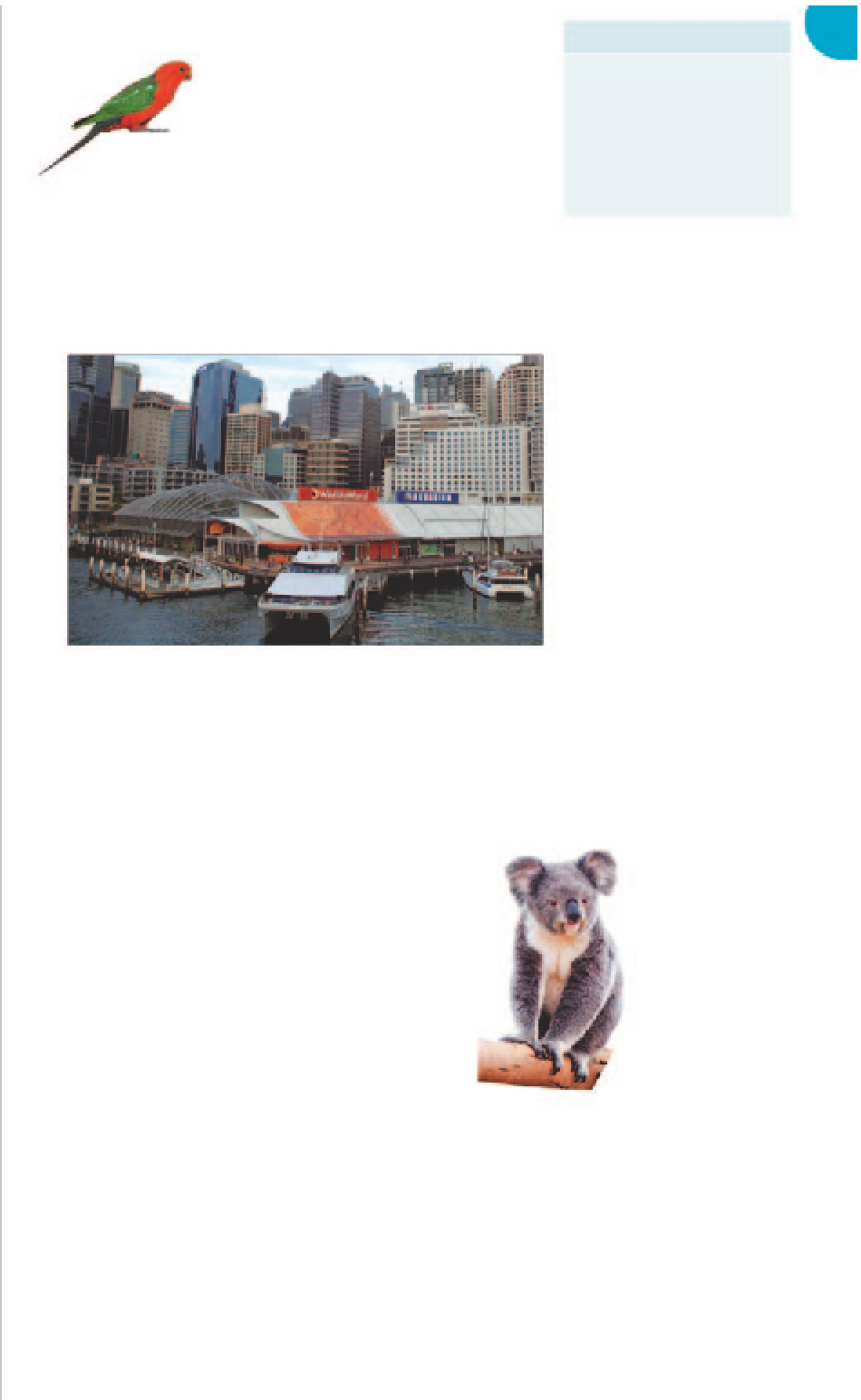Travel Reference
In-Depth Information
Sydney Wildlife World
3
VISITORS' CHECKLIST
Aquarium Pier, Darling Harbour.
Map
4 D2.
Tel
8251 7800.
@
Sydney Explorer.
g
Darling Har-
bour.
Town Hall.
Darling
Park.
#
9am-5:30pm daily (last
adm 5pm).
&
6
7
8
-
=
www
.sydneywildlifeworld.com.
au
Sydney Wildlife World contains over
100 Australian land-dwelling species,
including insects, birds, snakes, reptiles
and mammals. Together with the Sydney
Aquarium the complex comprises the
world's largest collection of native Australian animal
species to be housed in one location. In the heart of
Darling Harbour, the undulating see-through mesh roof is
a sight to behold in itself. Although compact in size, the
zoo contains nine different temperature- and humidity-
controlled habitats, and the experience is enhanced by
soundscapes, graphics and interactive models.
King parrot
Southern Cassowary. Around
half of the bird species of
Australia are found nowhere
else in the world.
Invertebrates
This habitat contains all kinds
of creepy crawlies such as the
carnivorous praying mantis,
the giant rhinoceros
cockroach and the world's
most dangerous spider - the
Sydney funnel-web.
Koala Sanctuary - Rooftop
Encounters
A raised walkway under the
open-air mesh roof winds
through the koala and
wallaby habitats and allows
visitors to get closer to these
cuddly, iconic animals and
even have a photo taken with
them. The koala's diet of
eucalyptus leaves is so low in
nutrients, it has to conserve
energy by moving slowly and
sleeping a lot.
The distinctive construction of Sydney Wildlife World and Sydney Aquarium
EXPLORING SYDNEY
WILDLIFE WORLD
Butterflies
The two-storey butterfly
house contains such
spectacular species as the
Zebra, Blue Triangle and
Ulysses buttterflies, the latter
with its huge 14-cm (5.5-in)
wingspan. During guided
tours visitors get to
gently hold the
butterflies.
There are joint tickets
available for Sydney Wildlife
World and Sydney Aquarium
and both sites can be visited
in one day.
Exhibits are laid out over
three floors with one kilometre
(0.6 miles) of enclosed
walkways to follow. The
habitats are climate controlled
and visitors largely view the
animals through floor-to-
ceiling viewing panels.
Throughout the day there
are feeds and talks given by
the keepers when visitors get
the chance to get closer and
sometimes hold or touch the
animals, under supervision.
Another good option is to
book a group or “VIP” guided
tour led by a qualified
Aquarium guide.
Yellow-Footed Rock Wallaby
Bounding about on
rocks in the Wallaby
Cliff habitat, this
stripy-tailed wallaby
is perhaps the most
attractive of the
kangaroo species. So
much so it used to
be hunted for its
beautiful fur. Its
huge feet have
strong muscles and a
brush of stiff hairs to
help it get around over
rocky terrain.
Frilled-Neck Lizard
Native to the dry
landscape of the
Kimberley in north
Western Australia, this
bizarre-looking
lizard flares the
folds of skin around
its neck when
feeling threatened or
scared. It will also hiss
and lunge to ward off
predators. It used to feature
on the Australian 2c coin.
Koala
Southern Cassowary
This distinctive blue-necked
bird, a close relation of the
emu, is considered the most
dangerous bird in the world. It
has powerful talons and one
spear-like inner claw which
can reach up to 12 cm (4.7 in)
in length. This flightless bird is
capable of killing dogs and
even humans if provoked.
ATTRACTIONS
Flight Canyon
This large open-air aviary is
filled with colourful birds,
such as the vibrant King
Parrot and Rainbow Lorikeet.
There are also ground
dwelling birds such as the
Sydney Wildlife World contains
nine habitats housing the
intriguing - and often unique
- species that are native to
the Australian continent.





































